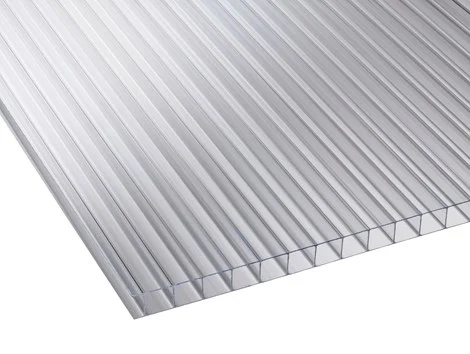Sustainability in the construction industry is no longer just a buzzword; it’s an essential component of modern business strategy. The pressure to reduce carbon footprints, optimize resource use, and ensure long-term environmental responsibility is increasing. With climate change concerns growing daily, construction companies are being called upon to rethink their methods and adopt practices that contribute positively to the environment.
Adopting sustainable technology can seem daunting, especially with the myriad of new tools and solutions available. But construction businesses that embrace green technologies are not only protecting the planet but also improving efficiency, enhancing project timelines, and reducing operational costs. This isn’t just about being eco-friendly—it’s about staying competitive in a rapidly changing industry where clients and stakeholders expect nothing less.
At its core, sustainability in construction involves making deliberate choices that limit environmental damage, preserve natural resources, and promote the wellbeing of both current and future generations. As the world moves towards greener alternatives, construction companies that fail to keep up may find themselves left behind. Implementing green tech isn’t just about saving the environment; it’s also about securing the future of your business by staying ahead of evolving regulations and consumer demands.
For businesses looking to position themselves as leaders in sustainable construction, there are numerous strategies and tools available. The following insights offer a guide on how to integrate green technology and elevate your company’s approach to construction.
Green Tech for the Modern Construction Business
Invest in Energy-Efficient Machinery
One of the most straightforward ways to make your construction business more sustainable is by upgrading to energy-efficient machinery. Newer models of construction equipment are designed with advanced technologies that often consume less fuel and operate with greater efficiency, leading to significant reductions in both costs and emissions.
Consider adopting machinery that utilizes alternative energy sources, such as biodiesel, electric power, or even hydrogen fuel cells. These energy sources not only minimize environmental impact but also position your business to comply with future regulatory standards, as governments around the world tighten emissions rules. While the initial investment in such equipment might be substantial, the long-term savings on fuel, maintenance, and even tax breaks often outweigh the costs.
Key steps for enhancing machinery sustainability:
- Choose equipment with high energy star ratings to ensure optimal energy efficiency.
- Opt for electric or hybrid vehicles and construction equipment wherever possible.
- Establish a strict maintenance and servicing schedule to keep machinery running at peak performance, reducing the likelihood of breakdowns and inefficiencies that can waste both time and energy.
By integrating energy-efficient machinery into your operations, you can immediately begin to reduce your carbon footprint while boosting the overall productivity of your team.
Adopt Smart Water Management Practices
Water is a crucial resource in construction, but it’s often used inefficiently. Smart water management practices are an effective way to reduce both water waste and costs, while also enhancing the sustainability of your projects. This can include everything from recycling water on-site to implementing systems that reduce unnecessary water use.
In many areas, droughts and water scarcity are becoming more frequent, making water conservation more important than ever. Installing technologies like rainwater harvesting systems or gray water recycling solutions can save significant amounts of water and reduce strain on local water supplies. For landscaping projects, selecting drought-tolerant plants can drastically cut down irrigation needs while still maintaining aesthetic appeal.
Practical water management strategies for construction:
- Install water recycling systems to capture and reuse gray water, which can be utilized for non-potable purposes like dust control or equipment cleaning.
- Use smart irrigation systems that adjust watering schedules based on weather conditions to prevent over-watering and reduce water waste.
- Employ leak detection systems to quickly identify and fix leaks, preventing water loss and minimizing damage.
Smart water management not only protects this precious resource but also positions your company as a responsible, forward-thinking leader in the construction industry.
Leverage Converge’s Construction Management Software
In today’s data-driven world, construction projects generate vast amounts of information that, if managed effectively, can significantly improve both efficiency and sustainability. One of the most powerful tools for doing so is Converge’s construction management software, which offers comprehensive project oversight through real-time data insights.
One standout feature of Converge’s software is its ability to monitor concrete curing in real-time using wireless sensors. Concrete is one of the most widely used construction materials, and optimizing its usage is crucial for sustainability. The software provides accurate data on concrete’s temperature and strength, allowing contractors to precisely time the next steps in construction, reducing material waste. Additionally, Converge’s AI-powered system can predict the most sustainable concrete mixes, choosing the blend with the lowest carbon footprint for each project.
Key benefits of construction management software:
- Real-time monitoring: By tracking concrete usage and curing in real-time, construction teams can significantly reduce waste and optimize material use.
- Predictive AI capabilities: The software can analyze data and recommend materials with lower environmental impact, such as eco-friendly concrete mixes.
- Enhanced timelines: With data-driven decision-making, project timelines are optimized, reducing time spent on-site and further lowering energy consumption.
Incorporating construction management software is an essential move for any construction business looking to boost sustainability while also improving overall project efficiency. This technology allows you to make smarter, greener choices at every stage of the construction process.
Implement Waste Reduction Strategies
Construction projects notoriously generate large amounts of waste, much of which could be recycled or reused if proper systems are in place. By adopting waste reduction strategies, your business can dramatically lower its environmental footprint, while also reducing costs associated with disposal.
Key practices include on-site sorting of waste materials to ensure that recyclables such as wood, metal, and concrete are separated from general waste. These materials can often be sent to recycling centers or reused in future projects, cutting down on the need to purchase new materials. Planning for material efficiency during the design phase of projects can also prevent the generation of excess waste.
Effective waste reduction techniques:
- Establish designated on-site recycling bins for common materials like wood, metal, and concrete.
- Reuse leftover materials from previous projects to save money and reduce environmental impact.
- Design projects with waste minimization in mind by using standard dimensions that result in fewer off-cuts and excess materials.
Waste reduction not only helps the environment but can also streamline operations and reduce disposal costs, making it a win-win for both your business and the planet.
Embrace Modular Construction
Modular construction is revolutionizing the industry by enabling buildings to be assembled in a controlled factory environment before being transported to the site for final assembly. This innovative approach significantly reduces waste, accelerates project timelines, and often results in higher-quality structures due to the controlled environment in which they are constructed.
Because the components are built off-site, there is far greater control over the use of materials and energy consumption. Modular construction is particularly beneficial for projects with tight timelines, as the process allows for much faster completion than traditional construction methods.
Advantages of modular construction:
- Reduced waste: Factory-based manufacturing leads to more precise material use, minimizing excess and off-cuts.
- Lower emissions: The transportation of pre-assembled units often uses less energy than traditional construction methods, as fewer trips are required.
- Improved efficiency: Shorter construction times reduce the amount of energy consumed on-site, further lowering the project’s carbon footprint.
Adopting modular construction is a powerful way for businesses to not only improve sustainability but also maintain high standards of quality and efficiency.
Utilize Renewable Energy Sources
Switching to renewable energy is one of the most impactful ways to reduce your construction business’s carbon footprint. Solar panels, wind turbines, and other renewable technologies can be installed on construction sites to power equipment, lighting, and other essential functions, significantly reducing reliance on fossil fuels.
Beyond on-site energy use, construction businesses can also encourage clients to incorporate renewable energy solutions into their projects. Offering sustainable options such as solar energy systems or energy-efficient building designs not only enhances your company’s sustainability credentials but also provides long-term energy savings for your clients.
Renewable energy solutions for construction sites:
- Install solar panels on-site to reduce dependence on grid power.
- Use portable wind turbines to generate electricity for remote locations.
- Integrate battery storage systems to capture excess energy for later use.
Renewable energy adoption is not only beneficial for the environment but also offers significant long-term financial benefits through reduced energy costs and potential tax incentives.






